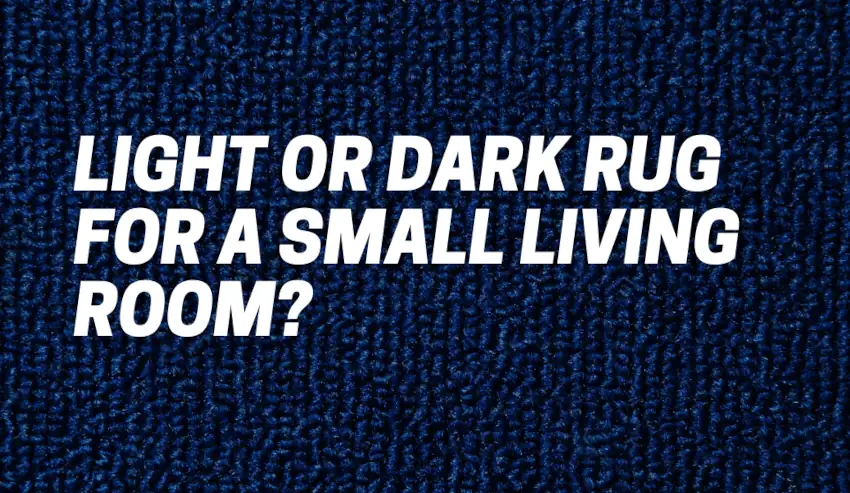Last updated on May 26th, 2024 at 06:27 am
Wool, revered for centuries as a top-tier material for rug-making, holds an esteemed place in the realm of interior design and comfort. Understanding the nuances of the best wool for rugs is essential to procure a quality rug that not only enhances the aesthetics of your space but also stands the test of time. Let’s explore the world of wool and rugs, unraveling what makes some wools stand out and why it matters.
Unveiling the Best Wool for Rugs
What is the Best Wool for Rugs?
The search for the best wool for rugs can lead you into a labyrinth of options. However, the pinnacle of quality often rests on New Zealand wool due to its exceptionally long, strong fibers that result in durable, lustrous rugs. The breed of sheep, the climate, and the sheep’s living conditions can significantly influence the wool quality.
Other wool options are:
- Tibetan Wool: Wool sourced from Tibetan sheep is highly prized in rug making. It’s robust, lustrous, and has a natural lanolin content that adds to its sheen and stain resistance.
- Merino Wool: Merino wool is famous for its softness and fine texture. While it might not be as durable as some other types, it’s excellent for luxury rugs in low-traffic areas.
- Argentinian Wool: Argentinian wool is known for its strength and high lanolin content, which provides excellent stain resistance. It’s often used in high-quality rugs.
- British Wool: Wool from British breeds like the Bluefaced Leicester or the Herdwick sheep is also used in rug making. It’s robust and has good stain resistance.
When selecting a wool rug, it’s important to consider the rug’s purpose, traffic, and the characteristics of the wool to ensure it meets your needs in terms of durability, softness, and stain resistance. Additionally, factors like the rug’s construction, pile height, and weaving technique can also impact the rug’s overall quality and performance.
Is 100% Wool Good for a Rug?
Undoubtedly, 100% wool rugs offer exceptional quality and durability. The natural resilience and soil resistance of wool make it a sought-after material for rug enthusiasts. However, the source and processing of wool play a crucial role in determining the final product’s quality.
Understanding Different Wool Types for Rugs
Exploring Different Wool Types
Several distinct wool types dominate the rug-making industry. From Merino wool renowned for its softness to Tibetan wool known for its higher lanolin content, each variation has unique qualities that impact the final rug product.
Is Merino Wool Good for Rugs?
Merino wool, celebrated for its fine, soft fibers, can create luxurious, plush rugs. Yet, its shorter fibers might require additional care and maintenance compared to longer, more robust wool varieties.
Identifying High-Quality Wool in Rugs
High-quality wool rugs often boast longer, finer, and denser fibers, exhibiting superior strength and longevity. Assessing the wool’s density, twist, and resilience can help identify a premium rug.
Benefits of Natural Wool Over Synthetic Materials
Natural Wool vs. Synthetic Materials
The superiority of natural wool over synthetic alternatives lies in its innate properties. Wool’s natural resistance to dirt, flame-retardant features, and ability to absorb moisture while maintaining insulation surpass the capabilities of synthetic materials.
- Biodegradability: Wool is a renewable and biodegradable resource. When a wool product reaches the end of its life, it will naturally decompose, reducing its environmental impact. Synthetic materials, on the other hand, can take hundreds of years to break down and often release harmful microplastics into the environment.
- Thermoregulation: Wool is an excellent insulator. It has the unique ability to regulate temperature by trapping air within its fibers. This means it can keep you warm in cold weather and cool in warm weather, making it a versatile choice for clothing, bedding, and textiles.
- Moisture-Wicking: Wool can absorb a significant amount of moisture (up to 30% of its weight) without feeling damp. It wicks moisture away from the body, keeping you dry and comfortable. This is particularly beneficial in activewear and outdoor clothing.
- Odor Resistance: Wool has natural antimicrobial properties that inhibit the growth of odor-causing bacteria. This means wool garments tend to stay fresher for longer, even after extended use.
- Durability: Wool is a strong and resilient fiber that can withstand wear and tear. Wool rugs, carpets, and upholstery are known for their longevity.
- Fire Resistance: Wool is naturally flame-resistant. It requires higher temperatures to ignite compared to many synthetic materials. When exposed to flame, it often self-extinguishes once the heat source is removed.
- Hypoallergenic: Contrary to common misconceptions, natural wool can be hypoallergenic. It doesn’t harbor dust mites, and its breathable nature can help regulate humidity, reducing the conditions that encourage allergens.
- Softness and Comfort: Wool is soft and comfortable against the skin, making it a popular choice for clothing, blankets, and bedding.
- Sustainability: Wool production can be sustainable and eco-friendly when managed properly. Sheep farming can have a low environmental impact compared to the production of synthetic materials, which often involves the use of fossil fuels and harsh chemicals.
- Biocompatibility: Wool is less likely to cause skin irritation or allergies in comparison to some synthetic materials that contain chemicals or allergenic substances.
However, for many everyday uses, natural wool offers a wide range of benefits, making it a preferred choice for various products.
The Global Impact: Countries Producing the Finest Wool
Top Producers of Quality Wool
Countries like New Zealand, Australia, and the UK are recognized for their exceptional wool production. Their geographical and breeding advantages contribute to the superiority of wool for rugs.
- Australia: Australia is one of the largest wool-producing countries globally. Merino wool, known for its fine texture and softness, is a significant product of Australian sheep farming. The country’s Merino sheep are highly prized for their wool quality and quantity.
- New Zealand: New Zealand is also famous for its high-quality wool production, particularly Merino wool. The country’s sheep farming industry and the natural environment contribute to the quality of the wool.
- Argentina: Argentina produces wool known for its strength and high lanolin content, which adds to its natural stain resistance. The country’s wool is often used in high-quality rugs and textiles.
- United Kingdom: The UK, particularly Scotland and parts of England, is known for producing high-quality wool. British sheep breeds like the Bluefaced Leicester and the Herdwick sheep are highly regarded for their wool.
- South Africa: South Africa is notable for producing a fine wool called Cape Merino. This wool is known for its quality and is used in various luxury products.
- China: China is one of the largest producers of wool in the world. While the wool quality can vary, certain regions in China produce high-quality wool, particularly from Tibetan and Mongolian sheep breeds.
- Italy: Italy is known for its high-end wool production, where fine merino wool is processed and transformed into luxury fabrics and garments.
These countries have a long history of sheep farming and have developed expertise in breeding and maintaining high-quality sheep for their wool. The quality of wool can vary within these countries due to factors such as specific breeds, farming practices, and regional climate differences.
Impact of Sheep Breed on Wool Quality
The breed of sheep significantly influences wool quality. Fine wool breeds like Merino produce softer fibers ideal for luxurious rugs, while hardier breeds offer sturdier, more resilient wool.
What are luxury carpets made of?
Wool Blends and Environmental Considerations
Wool Blends for Different Climates
Certain wool blends are tailored for specific environments. Alpaca-wool blends cater to colder climates due to their exceptional insulation properties, while cotton-wool blends offer a cooler alternative for warmer regions.
Factors to Consider When Choosing the Best Wool for Rugs
Choosing the Perfect Wool
Factors such as fiber length, twist, and ply significantly impact the quality of a rug. Additionally, considering the rug’s purpose and the foot traffic it will endure helps determine the most suitable wool type.
Longevity through Maintenance and Care
Maintaining Wool Rugs for Longevity
The longevity of wool rugs heavily relies on proper care and maintenance. Regular vacuuming, prompt stain removal, and professional cleaning at intervals help preserve the rug’s quality over time.
Sourcing Ethical and Sustainable Wool
Sustainable and Ethical Sourcing
In an era of conscious consumerism, sourcing wool ethically becomes paramount. Certifications like the Woolmark label guarantee the ethical and sustainable production of wool, ensuring animal welfare and environmental responsibility.
Innovations Impacting Wool Rug Quality
Innovations in Wool Rug Production
The rug industry continually evolves, witnessing innovations such as eco-friendly dyeing methods and sustainable manufacturing practices. These advancements elevate the quality and environmental-friendliness of wool rugs.
Expert Data: Comparative Table
Here’s a table showcasing a comparison of different wool types used in rug production:
| Wool Type | Characteristics | Best Use |
|---|---|---|
| Merino Wool | Soft, fine fibers | Luxurious rugs |
| Tibetan Wool | Higher lanolin content, durable | High-traffic areas |
| New Zealand Wool | Long, strong fibers, lustrous | Versatile, durable |
| Alpaca-Wool | Exceptional insulation, ideal for cold areas | Cold climate rugs |
| Cotton-Wool | Cooler alternative for warm regions | Warm climate rugs |
Navigating the diverse world of wool for rugs demands an understanding of its nuances, source, and craftsmanship. Armed with this knowledge, you can confidently select a rug that not only enhances your space but stands as a testament to quality and elegance.
Remember, the “best wool for rugs” isn’t just a choice; it’s an investment in comfort, aesthetics, and sustainability.


